I just post a mathematic question at math.stackexchange, but I'll ask people here for a programmatically recursive algorithm.
The problem: fill in the blank number from 1 to 9 (once and only once each blank) to finish the equation.

Additional conditions:
1. Mathematic priority DOES matter.
2. All numbers (include evaluation result) should be integers.
Which mean the divide should be divisible (E.g. 9 mod 3 = 0 is OK, 8 mod 3 != 0 is not OK).
3. For those who don't know (as one in the original question), the operations in the diagram are:
+ = plus; : = divide; X = multiple; - = minus.
There should be more than 1 answer. I'd like to have a recursive algorithm to find out all the solutions.
PS: I'd like to learn about the recursive algorithm, performance improval. I was trying to solve the problem using brute force. My PC freeze for quite a while.